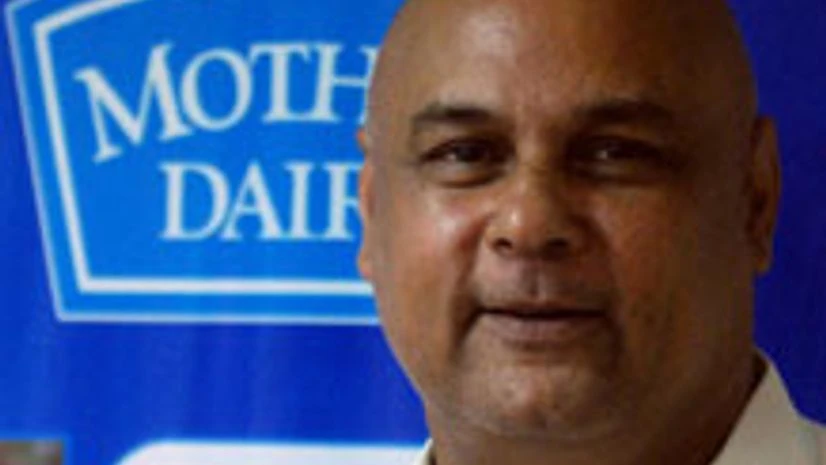Delhi-based milk major Mother Dairy, a subsidiary of the National Dairy Development Board, recently raised the price of its retail products by Rs 2 a litre, for the second time this financial year. Mother Dairy Fruit & Vegetable Pvt Ltd's Managing Director Siva Nagarajan says his options were limited, in an interview with Sanjeeb Mukherjee. Edited excerpts:
You recently raised rates of all milk varieties by Rs 2 a litre, at a time when prices of almost all essential food items were ascending. Why?
We earlier increased our rates in May and were forced to increase it again in October, as milk procurement prices had gone up significantly during this period. We have not passed on the entire increase in procurement cost to the consumer, as the flush season has started, when milk supplies usually increase and procurement price comes down. So, we will be able to adjust the remaining cost not covered by the rise. The procurement price of milk has gone up largely due to increase in fodder rates.
Also Read
How much has been the increase in procurement price of milk and how much has been covered by the recent increase in rates?
Between May and October, the procurement price of mik has gone up by Rs 3.50-4 a litre, while we have increased the retail price by just Rs 2 a litre. This means we have not passed on the entire burden to the consumer and Rs 1-1.25 a litre will have to be adjusted by us.
So, there scope for another increase in your milk prices?
There’s no possibility of another increase in the next two-three months but what will happen after that, I cannot say; things are very dynamic in this market.
Why do Mother Dairy or other producers have to increase their retail prices right at the beginning of the flush season, when supplies usually go up and, with the monsoon being good this year, there was every possibility of procurement prices dropping due to good supplies?
It is true that supplies will rise during this flush season but it won’t rise by so much as to bring down the prices by a significant amount to enable Mother Dairy to recover the increased cost of procurement. Please remember, I have to recover Rs 1-1.25 a litre, as this has not been passed on to consumers, which means prices have to fall by that amount. I don’t see that happening, despite supplies rising during the flush season. If procurement prices would have gone up by a lesser extent, say Rs 2 a litre since May, we would not have increased the retail prices just ahead of the flush season.
Could there be a cut in prices if your procurement prices go down in the next few months?
There’s no possibility; procurement rates have stabilised and the outlook is firm.
There are also allegations y private milk traders in and around the capital and also elsewhere that Mother Dairy increases milk prices because it makes super-normal profits, which go against the cooperative philosophy.
Mother Dairy never makes super-normal profits. About 75-78 per cent of our realisation is paid back to farmers, in the form of procurement price.
What about the allegation that Mother Dairy has increasingly moved away from the cooperative movement’s values, that its primary job was to support the milk cooperatives?
We are a company. We purchase milk from cooperatives but if cooperatives fail to supply us the desired quality, we have to purchase from outside. Only then will we be able to supply the end-product to our consumers. Farmers in UP and Rajasthan who sell milk to Mother Dairy are getting a much better price for their produce as compared to farmers anywhere else in the country.
How do you see the overall milk industry behaving in the coming years?
I’m very positive about the overall industry, in the sense that a good and stable level has been reached in farmgate prices. It has reached a level where farmers have started taking interest in dairying. This will, I am confident, be accompanied by productivity efforts in feed and fodder management and breeding practices. There are many programmes in these areas as well.
Take this year, for example. Cattle feed majorly comprises oilcake. When processors could not make money from oil, they raised oilcake prices, which in turn pushed up feed meal rates and, subsequently, milk prices. This is what we need to keep an eye on.
And, what about the industry?
I feel a lot of consolidation will happen in the Indian dairy industry and some of it has already started to happen, as smaller dairies are getting picked up by big ones. All this is because valuations are getting better. In other words, people are willing to pay a higher price for a dairy unit, as they anticipate it would grow in the coming years. Dairying in India holds a lot of promise.

)
